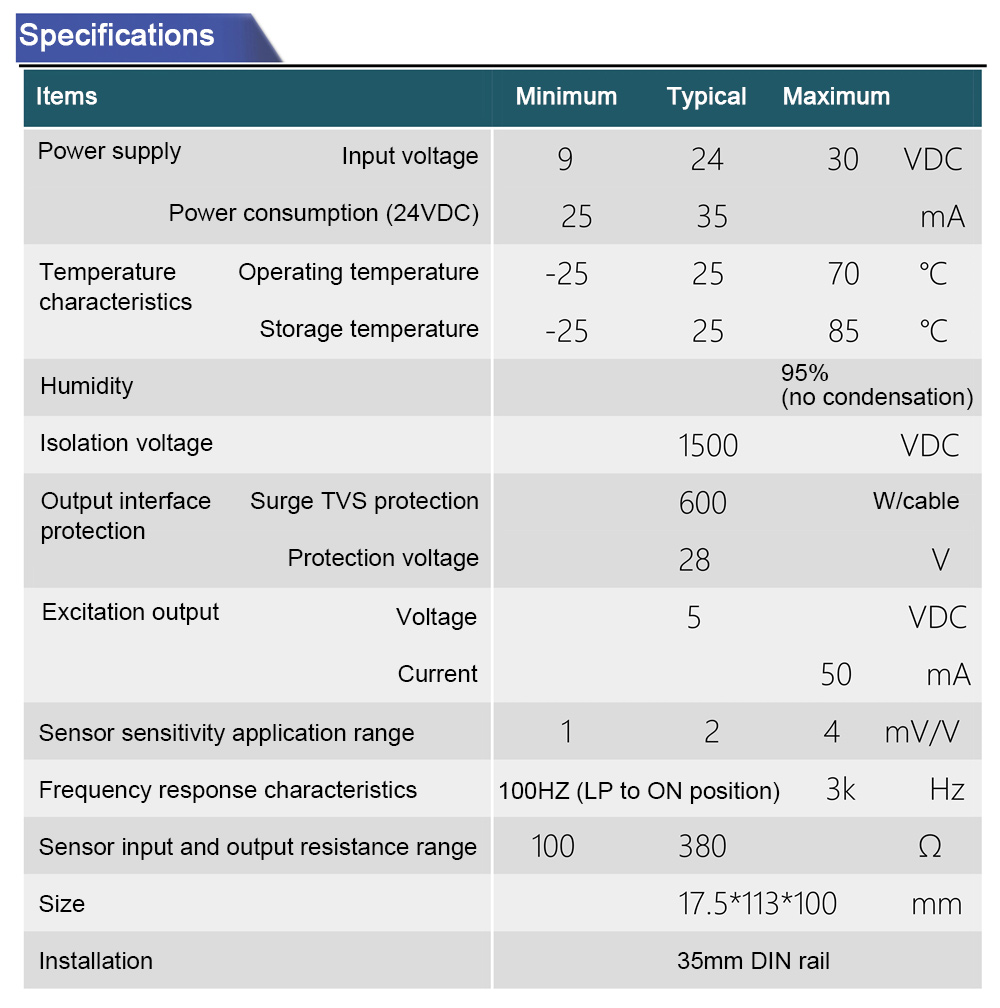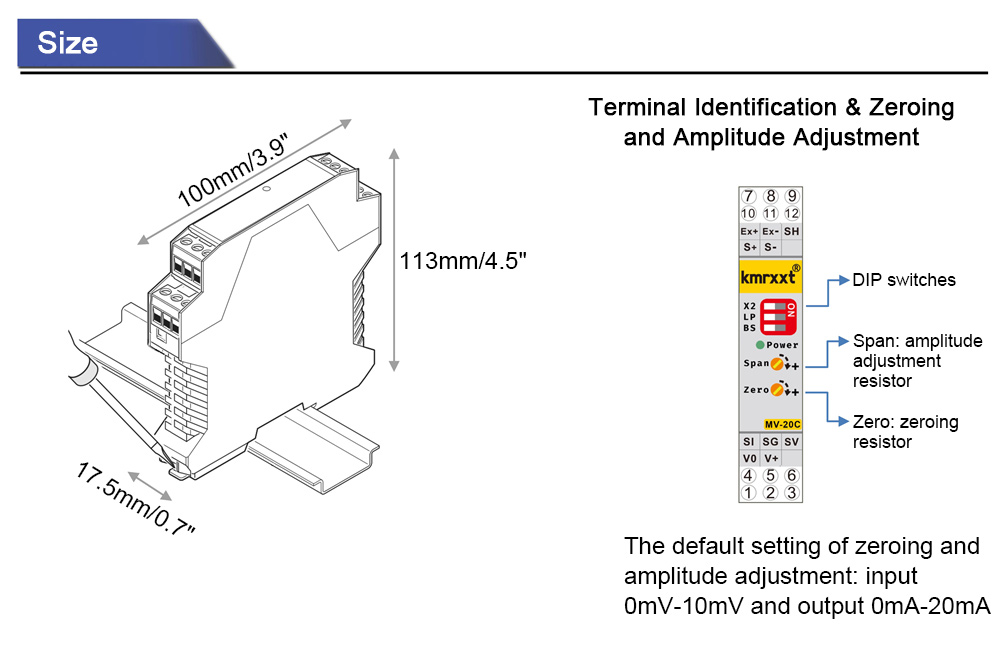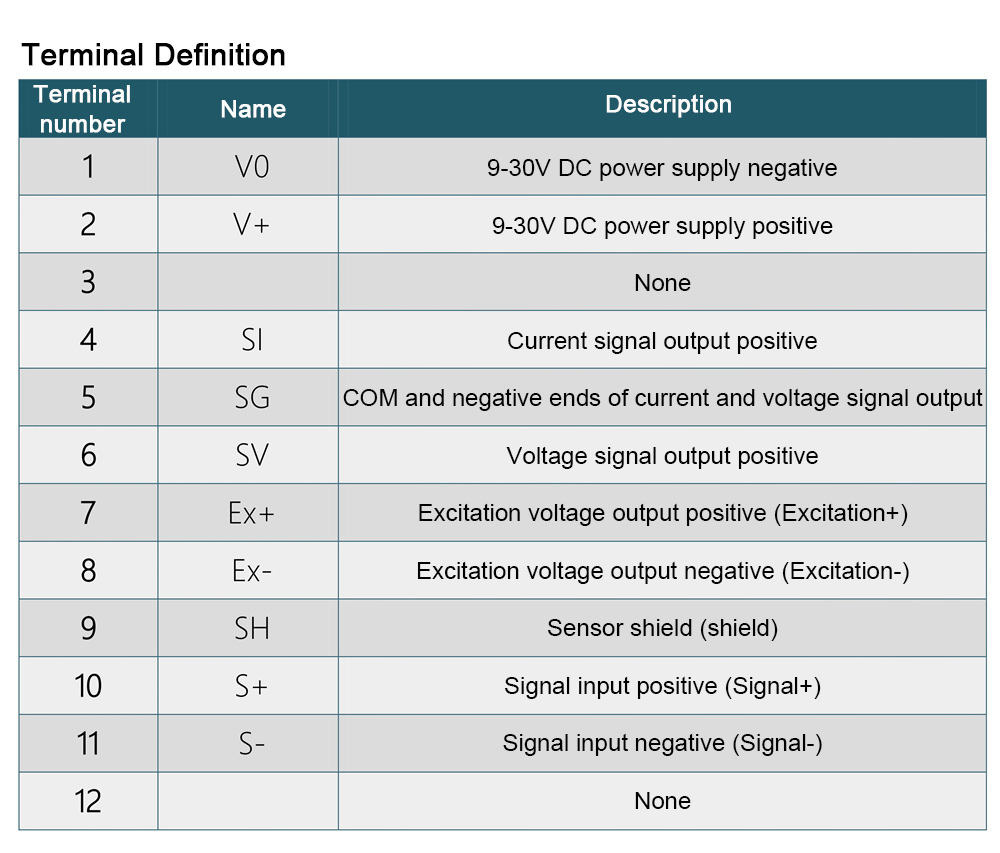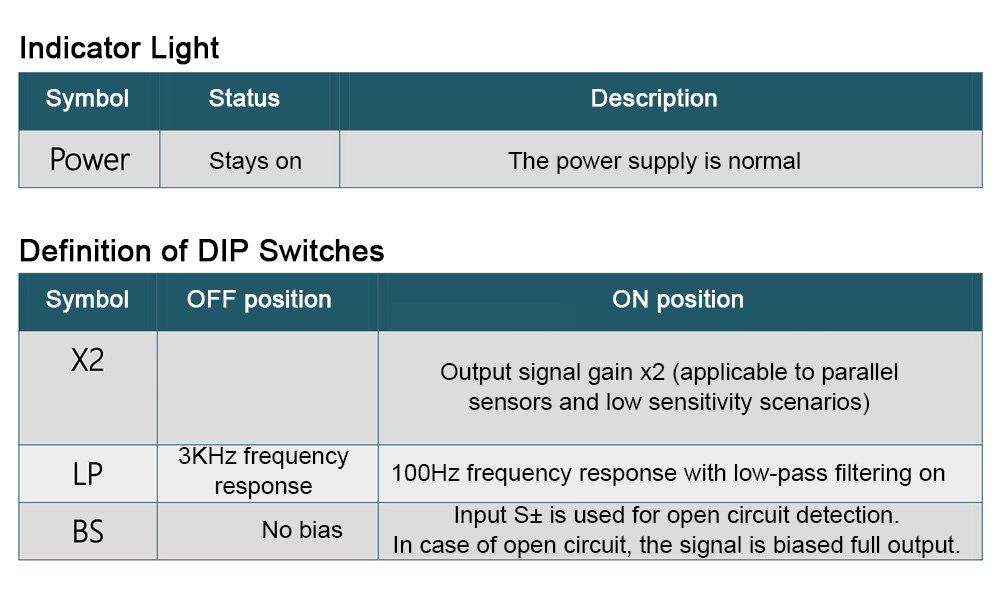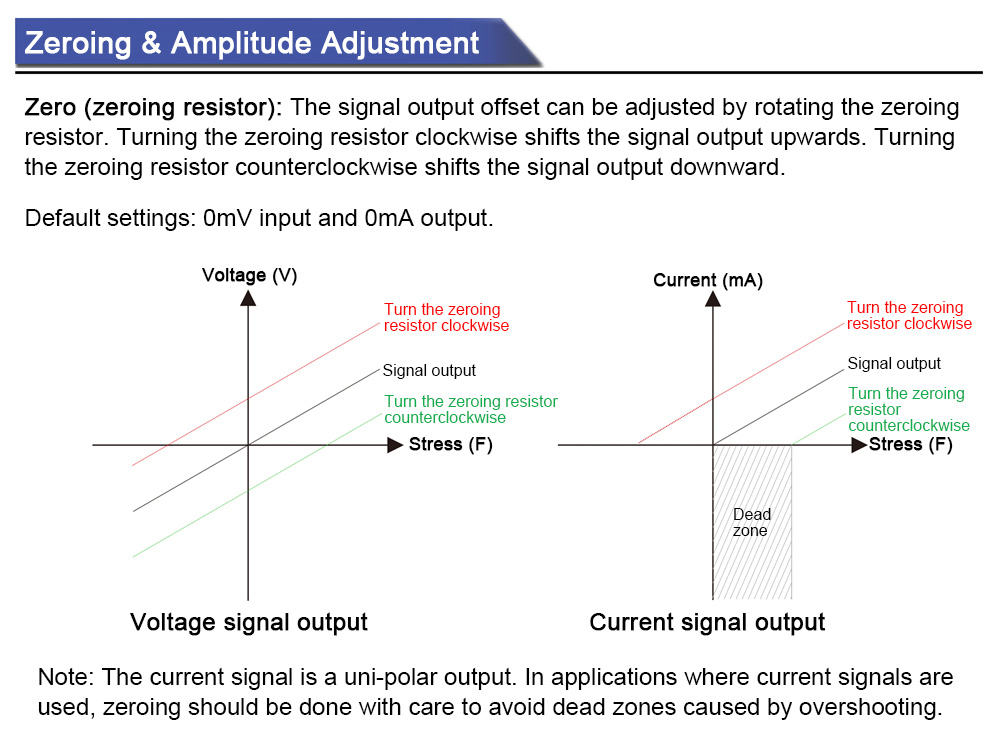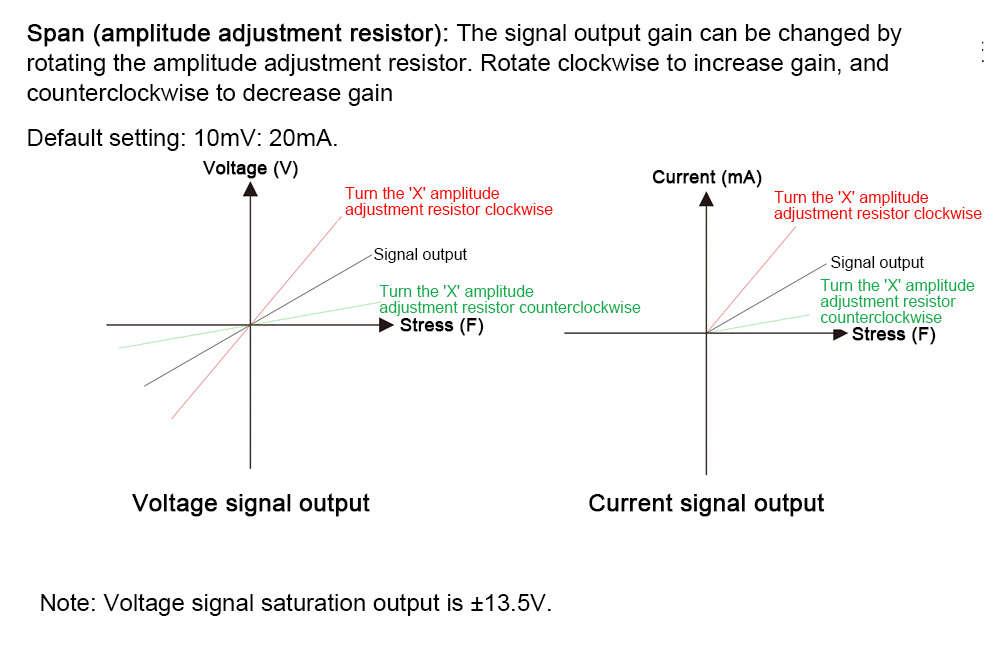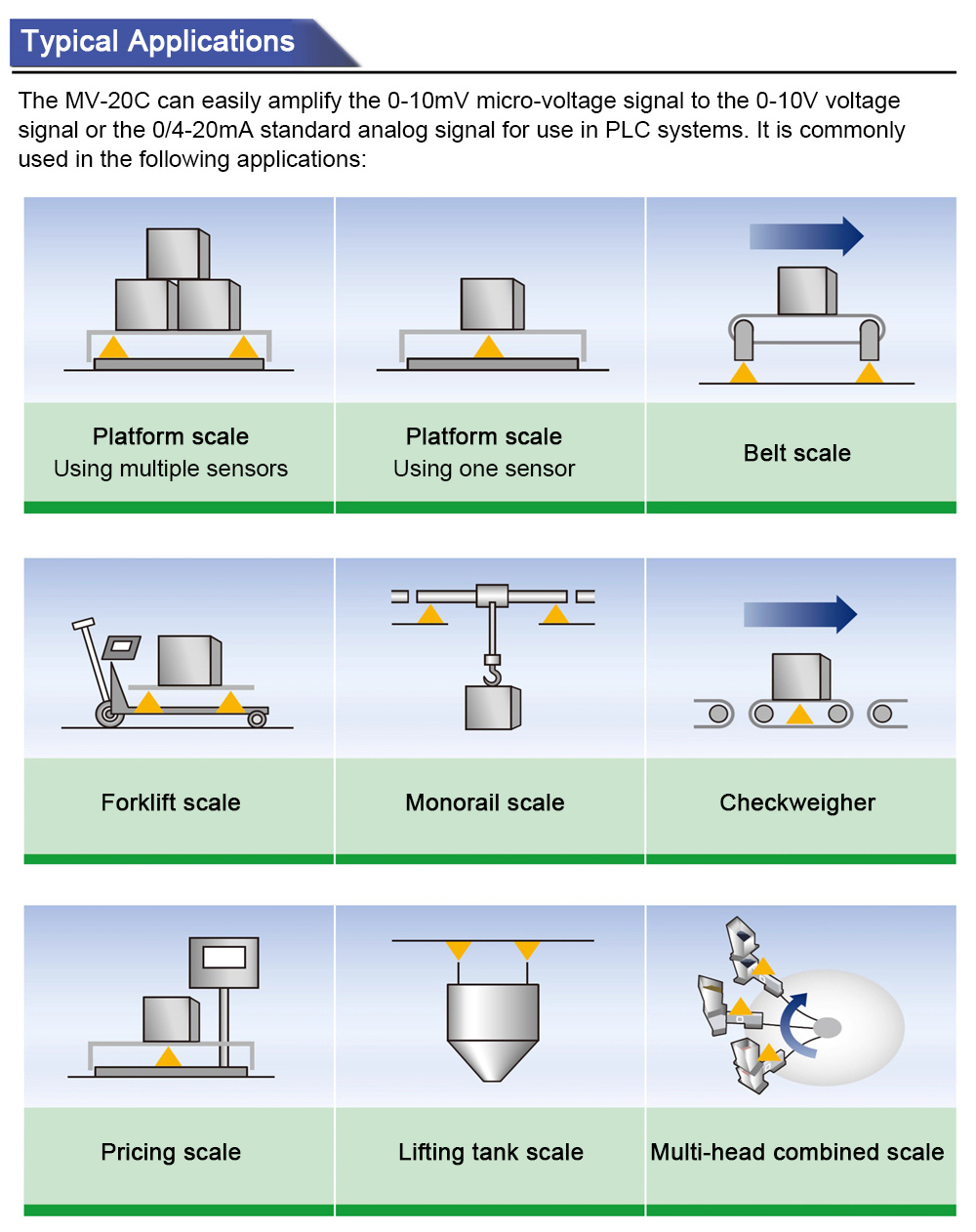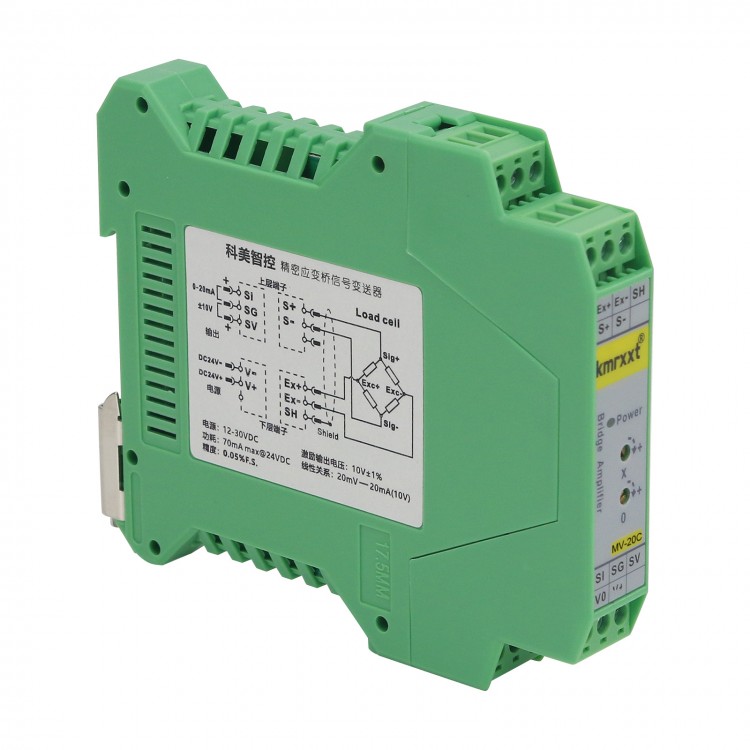
| Quantity | 3+ units | 10+ units | 30+ units | 50+ units | More |
|---|---|---|---|---|---|
| Price /Unit | $41.27 | $40.43 | $39.16 | $37.48 | Contact US |
 M5Stack StamPLC IoT Programmable Logic Controller ESP32S3 Cloud Data Monitoring for Industrial Automation
$66.20
M5Stack StamPLC IoT Programmable Logic Controller ESP32S3 Cloud Data Monitoring for Industrial Automation
$66.20
 Coolmay MX3G-70C-48MT 7" HMI PLC All in One HMI with Built-in PLC (24DI 24DO Transistor Output)
$155.14
Coolmay MX3G-70C-48MT 7" HMI PLC All in One HMI with Built-in PLC (24DI 24DO Transistor Output)
$155.14
 Coolmay MX3G-43C-22MT 4.3" HMI PLC All in One HMI with Built-in PLC (12DI 10DO Transistor Output)
$95.71
Coolmay MX3G-43C-22MT 4.3" HMI PLC All in One HMI with Built-in PLC (12DI 10DO Transistor Output)
$95.71
MV-20C 0-20mA ±10V Strain Gauge Bridge Amplifier Industrial-grade Precise Isolated Bridge Amplifier
Attention:
The product supports hardware zeroing and amplitude adjustment. It supports bipolar applications, such as test applications where tension and pressure are present at the same time, and where a ± 10V signal is generated.
Description:
MV-20C is a cost-effective industrial-grade
strain gauge amplifier. It is widely used in industrial manufacturing,
industrial automatic control equipment, test and measurement,
intelligent instrumentation and other occasions. The amplifier is
suitable for signal amplification and transmission output of various
strain resistance bridge load cells, such as S-type force sensors, wheel
sensors, and load cells. It is internally powered by an isolated power
supply, making it suitable for industrial applications with harsh
electrical environments. MV-20C adopts a modular design and detachable
terminals, with small size and light weight. It can be mounted on a
standard 35mm DIN rail. It is simple and easy to use.
MV-20C is
fully compatible with MV-20B due to pin-to-pin compatibility. MV-20C has
lower noise and lower temperature drift. In addition, it also supports
bipolar measurement occasions and adds a low-pass filtering to make its
application scenarios wider and more flexible.
Advantages:
- MV-20C precision strain bridge signal transmitter
- Suitable for tension, pressure, weighing and other force sensor applications
- Industrial grade, with an accuracy of 0.01%
- Low noise and high precision. The overall maximum non-linearity error is better than 0.01% F.S.
- Can be mounted to a standard 35mm DIN rail. 9-30V wide voltage power supply
- The power supply is electrically isolated from the signal, and the isolation voltage is 1.5KV
- All interfaces with surge protection
- Low-profile, modular design and detachable terminals
- Precision and low-temperature drifting. 5V excitation power supply output
- Thanks to DIP switches, you can choose 3KHz and 100Hz low-pass filtering. Excellent filtering and anti-interference ability
- Adjustable standard output signals: 0/4-20mA, 0-10V and ±10V bipolar signals
- Supports 1mV/V~4mV/V sensitivity sensors, and supports for tension/pressure bipolar measurement occasions
- Application scenarios: It has been widely used in various industrial control occasions
Package Included:
- 1 x Strain gauge amplifier
- 4 x 3P terminal blocks
Packaging Details:
- Weight: 0.2kg
Common Problems in Engineering:
1. How to adjust the output to 4-20mA?
The adjustment steps are as follows:
a. Connect the sensor to the transmitter. Under no load of the system, adjust the Zero (zeroing resistor) and observe the output until it is 0mA;
b. The system loads the full load, adjusts the Span (amplitude adjustment resistor), and observes the output until it is 16mA;
c. Under no load on the system, adjust the Zero (zeroing resistor) clockwise again, and observe the output until it is 4mA. In this case, the output from zero to full load corresponds to 4-20mA.
2. How to achieve precision test and measurement?
The strain bridge sensor exhibits a creep effect during use. For the accurate measurement of weighing or other forces, it relies more on equipment calibration (using standard measuring tools for calibration, such as standard weights, etc.), and the application of software to zero, zero and other technical means to correct in the process of use. Therefore, the zeroing and amplitude adjustment of the transmitter is not of great practical significance for precision measurement occasions with software calibration correction. When the sensor is being used, it is only necessary to adjust the appropriate offset value (zero value) and amplitude value, so that the measurement range and signal output amplitude cover the input range of the AD module to the greatest extent.
3. Is it possible to support the simultaneous use of multiple strain bridges?
Yes, but it is not recommended for precision measurements. The excitation voltage of the module is 5V, the current can reach 50mA, and it supports 4 sensors in parallel.